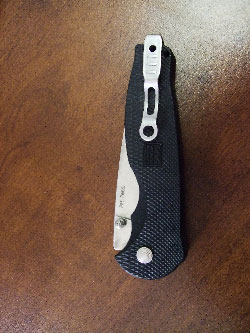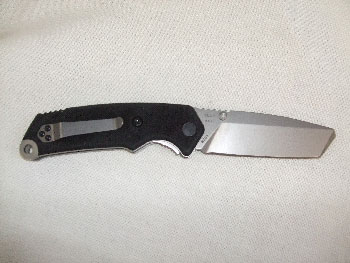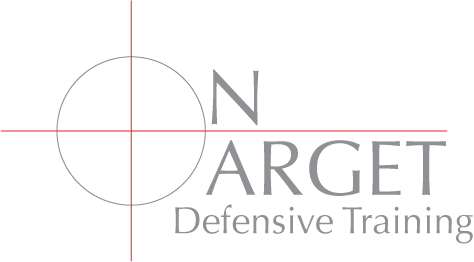Always Bring A Knife To A Gun Fight |
||||
|
From Sportsman's News Magazine Building your Personal Protection Kit 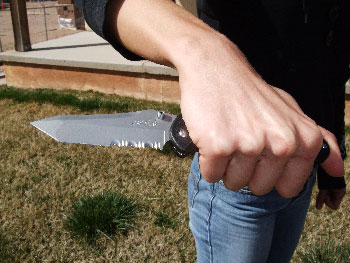 Ask any of my students what the golden rule of personal protection is and they will tell you without hesitation that it is “if you don’t have it on you, you don’t have it.” That is because throughout my personal defense classes, I repeatedly stress this mantra over and over again. Whether it is a gun, a knife, a flashlight or a baseball bat, having your instrument of protection at home, in your car or in a purse means you don’t have it available when you need it and thus, you don’t have it at all. I can’t tell you how many times someone purchases an expensive piece of personal protection equipment and then has nothing but a false sense of security because they aren’t carrying it on their person when “it” hits the fan. To be effective, the gear you trust your life with needs to be on you when you need it. That is why I always carry a good quality folding knife with a razor sharp blade on me at all times. In fact, because of my daily activities, I carry a few knives on me at any given time. One knife I use for opening packages. Another is used for cleaning my fingernails, and then there is my personal protection knife, which I don’t use for these other purposes. In order to be useful for personal protection, your knife needs to have a few features that you won’t find in an average, non-tactical knife. This article will talk about those features and some of the knives I have tested that meet the needs of the personal protection user. As I have mentioned before, a knife carried for personal protection is not used as a stabbing implement. The reason for this is that a stab wound is a very ineffective way of stopping an attack. While a stab wound may be fatal, punctures bleed slowly and an attacker, while mortally wounded, may take a long time to cease his attack. If using a knife for protection, it should be used to slice, not stab. Slash wounds bleed much more profusely than stabs. Another shortfall of a stab wound is that the suction created by the body around the knife blade may prevent the defender from retrieving their knife from their attacker’s body and being able to use it again as the attack continues. Additionally, striking bone may cause the defender’s hand to slide down the blade, causing the defender serious injury. The knives I tested for this purpose were provided by SOG Knives and by Buck Knives. Each of these knives had specific criteria that made them ideal for a personal protection instrument. The knives each had a blade between 2.5 and four inches long, were folders with easy one-handed opening, had a pocket clip and locking blades. Carrying your knife Your knife needs to be carried on your person. It needs to be where you can easily reach it while struggling with an attacker. It needs to be reachable if your hands are pinned to your sides. For this reason, your personal protection knife needs to have a pocket clip. These clips allow the knife to be carried clipped to the inside of a pocket or better yet to your waistband. The drawback to this is that it is obvious you are carrying a knife. All of the knives I tested had a pocket clip, but the most discreet was the SOG Flash II. Because of the design of its pocket clip, it looks like you have a pen clipped to your pocket, with none of the knife showing. The Blade “IS” the Knife The oldest tool known to man is the knife and more specifically, the blade. Your blade needs to be between 2.5 and four inches in length for optimum tactical use. That in no way means that shorter, thinner blades will not do in a pinch and whatever blade you can get your hands on in an attack is better than nothing. A knife blade should be sharp and hold its edge for a long time. It also needs to be made from steel that will hold up to daily use, without rusting or pitting. I also look for a blade that will withstand tremendous lateral force. Every knife maker will tell you that a knife is not intended to be used as a prying instrument, but in a life or death situation that goes right out the window. A knife is a great tool for prying open a locked door or the trunk of a car, if you are being held captive. If your life depends on it, you want a blade that will withstand the kind of sideways force you will apply as a prying tool. Of all of the knives I tested for this purpose, the odd shaped blade of the Buck Bones was the best for prying. The Bones also tested as the best slashing instrument because of its scalpel-like blade. 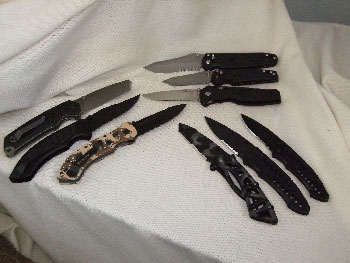
Get a Grip There is a right way and a wrong way to hold a knife for personal protection. The right way was developed by Lt. Colonel William Fairbairn who trained commandos and OSS agents during World War II and who was in more than 600 recorded fights. The Fairbairn hidden blade technique has the knife blade facing up the defender’s arm pointing at their elbow. This allows the knife to be used for slashing, while still keeping the fist free for punching. However you hold your knife, it is important that it have a grip that will not slip when your hands get sweaty. The best grip for this, of the knives I tested, was the handle of the SOG X-Ray Vision. Its smaller texture made the knife cling to my hand even when damp. Open Sesame You want a knife that you can get opened and locked easily with one hand. For that reason there is nothing as effective as SOG’s Assisted Technology (SAT). With SAT, a touch of the thumb stud causes the knife to spring open and lock securely. This is not a switchblade, because you have to begin the motion of opening the knife in the regular manner, but then the spring takes over and completes the process for you. For its size (very small) and ease of use (very quick) I really liked the SOG Twitch II. It has a protruding steel extension that when pushed, causes the knife to spring open rapidly. For a non-assisted opener, I really liked the smooth action of Buck’s Black Pilot and Black Mantis. While the two knives are identical in design, the Mantis is a smaller version of the two. Both opened rapidly with a slight push on the thumb stud and a snap of the wrist.
Like any personal protection device, what fits for me isn’t necessarily going to fit for you. Wardrobe, style, daily activities, body shape and size, all present variables that make it impossible for a manufacturer to make the universal implement that works well for everyone. My pick for a personal carry knife is the SOG X-Ray Vision. It never leaves my pocket, no matter where I go. The best way to make your choice is to visit the gift bar at your local Sportsman’s Warehouse store and try a wide variety of knives for yourself. Practice opening them with one hand and see how they fit in a pocket or in your waistband. See how the grip feels in your hand. Make sure that the knife fits your hand well. If you have small hands, you don’t want a meaty gripped knife. Ask about the steel the blade is made with. A good quality knife will contain good quality steel. Typically, the best production knives use AUS 8, 154 CM or 440 C steel, with a cold forging process. Pretty much any quality knife, not a $10 gas station special, will serve you for many years to come.
Get one that fits your needs and carry it on you at all times. Because if you don’t have it on you, you don’t have it. Next month: Flashlights. About the author: In addition to his job as managing editor of Sportsman’s News, Dan Kidder is an NRA Certified Firearms Instructor, a former range safety officer for the National Rifle Association Headquarters Range in Fairfax, VA, and a former Marine. He has worked with hundreds of students, including members of local and federal law enforcement, as well as beginning shooters.
Sportsman’s News in no way endorses the use of violence and is not advocating for or encouraging anyone to carry a weapon or use a weapon upon another person. The information provided in this article is general in nature and does not cover any and all circumstances or situations. Sportsman’s News encourages anyone choosing to carry a weapon for personal protection to seek out the services of a qualified professional instructor and to comply with all local and federal laws.
The cost of ignorance is far higher than the price of our training. The Second Amendment of the U.S. Constitution: |
||||
|
Dan Kidder •BCI/ NRA Certified Instructors • (435) 868-8919 • Cedar City, UT
|
